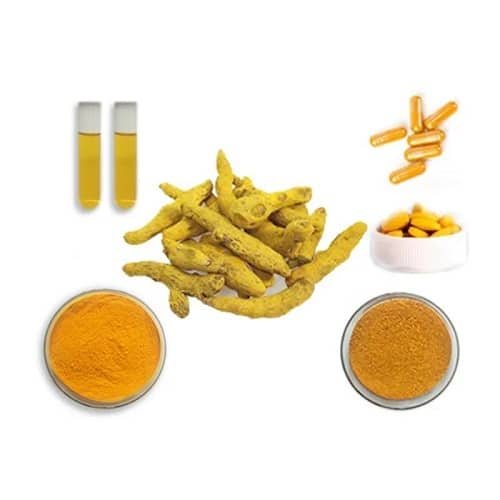What is curcumin?
Curcumin is a diketone compound extracted from the rhizomes of some plants in the Zingiberaceae and Araceae family. The chemical formula is C21H20O6. Among them, turmeric contains about 3% to 6% curcumin, which is a rare pigment with a diketone structure in the plant kingdom. Curcumin is an orange-yellow crystalline powder with a bit of bitter taste and insoluble in water. It is mainly used for coloring intestinal products, canned food, and soy sauce products in food production.
A brief history of curcumin

Curcumin Fine Powder
There is a story that ancient Polynesians sailed across the Pacific Ocean to Hawaii Island with turmeric and curcumin. Today, Hawaiians are still using this drug called olive oil.
Marco Polo recorded turmeric information in 1280 AD when he was in China. This is what he wrote in his diary: “There is a vegetable that contains all the properties of real saffron. It also has color and smell, but it is not actually saffron.”
As early as 1280 AD, turmeric was used as a substitute for saffron (a spice) in China. In addition, it has been used as a substitute in Europe for 700 years.
Curcumin (a type of curcumin) is one of the main healthy ingredients in turmeric spice. It is said that curcumin gives turmeric its distinctive yellow color.
The bright yellow-orange pigment in turmeric is the main source of curcumin. After further decomposition, there is a sub-compound or “component” in curcumin called “curcumin”. Turmeric contains demethoxy curcumin, also known as “curcumin II”, dimethoxy curcumin, also known as “curcumin III” and cyclocurcumin. These compounds account for about 3% to 5% of turmeric on average, although in some areas of India, turmeric actually contains a higher content, due to local favorable growth conditions and farming methods, the content reaches 6% to 8%. In 1815, scientists isolated the curcumin molecule for the first time. In 1870, scientists obtained curcumin crystals. In 1910, scientists determined the overall structure of curcumin.
In India, turmeric is considered very auspicious, and it has been widely used in various ceremonies for many years. Even today, spices are used in many ceremonies, from religious ceremonies to wedding ceremonies. In medieval Europe, turmeric spice was widely known as Indian saffron. Turmeric is often used as a substitute for the more expensive saffron spice. The Indian city of Nizamabad is the world’s most important trading center and the largest producer of turmeric. Therefore, Nizamabad is often called the “City of Turmeric”.
In 1896, Friedrich Lazell pointed out in the book “The History of Humanity” that the preparation of turmeric powder is highly ritual, especially in Micronesia. For example, the roots of turmeric were fixed in special buildings by four to six women. On the second day after the rhizomes are rooted, a priestess will offer three aged soma nuts and three small coconuts in prayer. After the ritual prayer is over, the dye is wrapped in banana leaves, baked into cakes, or hung up for later use.
A brief history of curcumin in this life

In 2016, Google released a global diet trend report that showed that turmeric search volume has increased by 300% in the past 5 years.
In 2017, turmeric once again became one of the “top ten superfoods” sought after by foreign media, and successfully entered the beverage industry, and it was in the limelight for a while.
In 2017, Starbucks previously launched a turmeric latte in the UK. You only need to combine milk, turmeric, and spices and pour them into strong coffee. Turmeric latte is made with a smooth and fresh taste. It is said that this turmeric latte also helps burn fat and lose weight. The British “Guardian” reported that “From Sydney, San Francisco to the UK, you can see its shadow in cafes everywhere”
In 2018, the development momentum of turmeric is still strong, and it is easily listed as “the world’s most-watched food ingredient recipe of the year”.
Recently, NovaSOL curcumin has been rated as the No. 1 nutrient by Wiley, the world’s largest independent academic book publishing house.
Few raw materials can be so welcomed and sought after by different countries, but turmeric is a minority among them.
According to PubMed data, in the past five years alone, nearly 6,000 scientific papers on curcumin and its health benefits have been published. More than 10,000 studies and 120 clinical trials have evaluated turmeric and curcumin and their health benefits.


